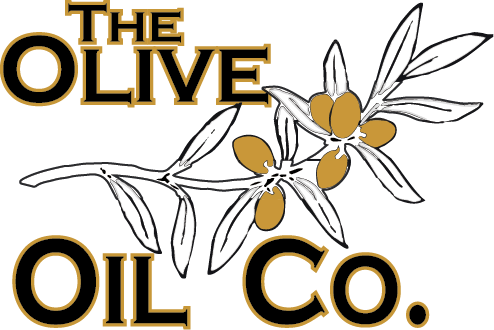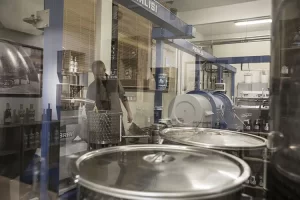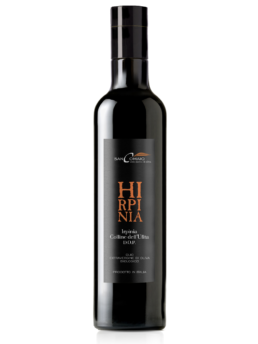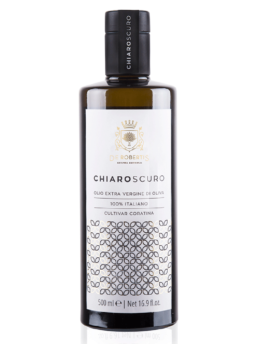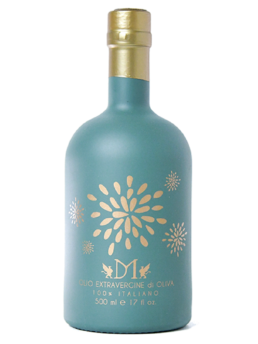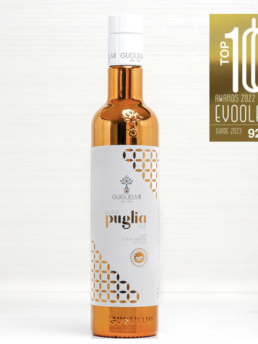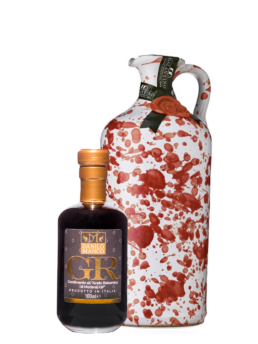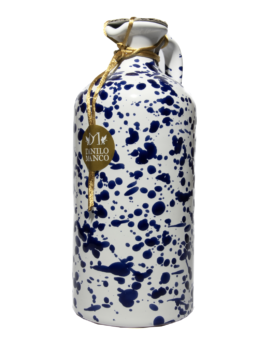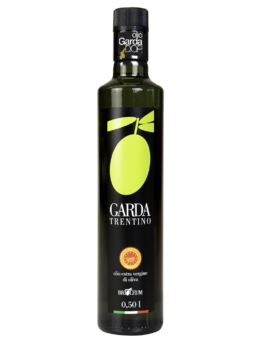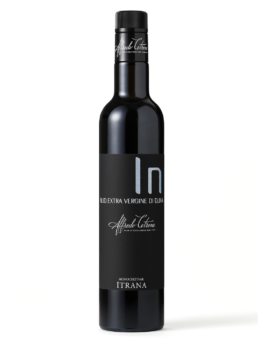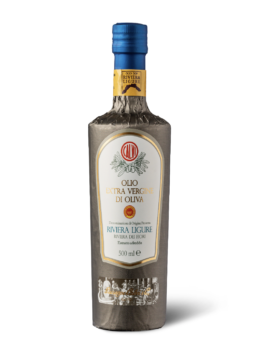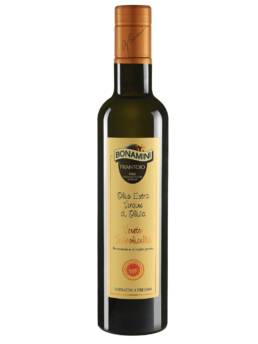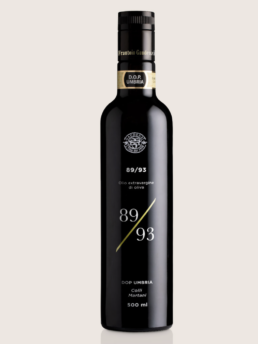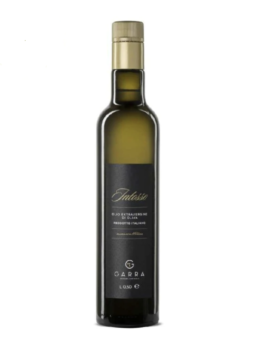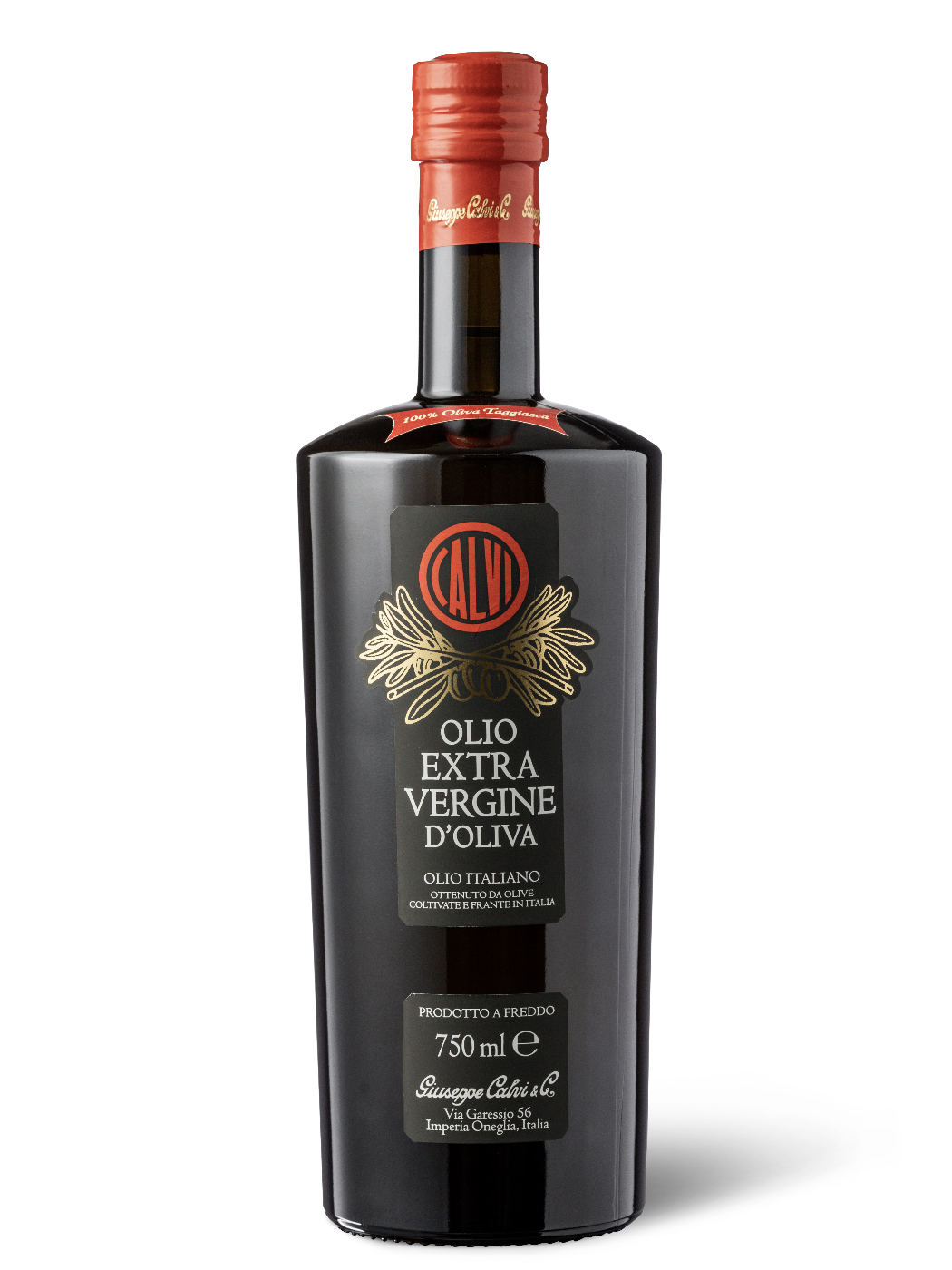
“TAGGIASCO 750ml” Frantoio Calvi
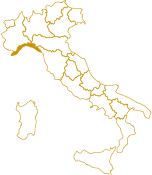
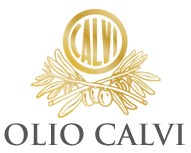
![]()
ORIGIN: Liguria, Riviera dei fiori
€19.65
Out of stock
DESCRIPTION: Extremely selective Extra Virgin Olive Oil, exclusively obtained from olives of Taggiasca Cultivar from the Province of Imperia, Liguria, Italy. The olives are picked and pressed in our continuous mill on the same day. The taste is mild, lightly fruity, very moderately spicy, very round, and sweet with a unique scent of wild almond and artichoke. Unfiltered, the oil rests for a few weeks in stainless steel barrels where natural decantation takes place
COLOUR: Pale green /gold
ACIDITY: 0,28
CULTIVAR: Taggiasca
INTENSITY: Light Fruity
SCENT: Artichoke and green almond
UNFILTERED
PRESSING: Cold extraction, natural dregs can lie at the bottom of the bottle.
HARVEST: 2023/2024 harvest October-January
Quantity: 750ml
Are you a trade customer? If you are a trade customer, please email us at trade@theoliveoilco.it
This superior, very delicate and really exclusive
Extra Virgin Olive Oil must be used to dress fresh
dishes such as fish, meat carpaccio, and fresh
salade. Due to the sweetness, it can be utilised
in preparing cakes and also to dress fruits.
VEGAN SOCCA (CHICKPEA FLATBREAD GLUTEN-FREE)
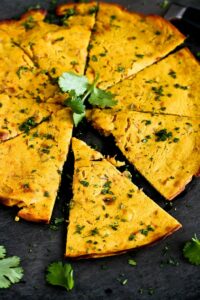
Ingredients
1 cup (120g) chickpea flour (garbanzo bean flour)
1/2 tsp salt
1/4 tsp pepper flakes or to taste
1/2 tsp rosemary
1 tsp of RIVIERA LIGURE EVOO, plus more for cooking. (for use in the batter)
1 cup (236.59 ml) water
Instructions
Mix all the dry ingredients in a bowl until well mixed.
Add the oil and 3/4 cup water and mix (whisk for faster mixing), add more water to make a thick smooth batter. (Depending on measuring and how packed the flour was, you will need either a whole cup or one tablespoon less than this. Make a thick batter for thicker pancakes and a thin batter for a crispy crepe-like result). Cover and let it rest for at least half an hour (or overnight). If keeping overnight, cover the bowl and refrigerate.
Stovetop: Heat a cast-iron skillet over medium heat. When hot add a few drops of oil and spread well. Add a ladle-full of the batter. Cook for 4 to 6 minutes then uses a spatula to loosen the flatbread. If it is still sticking, let the bread cook longer and then try again. Flip and cook for another 2 to 3 mins. Cooking time will depend on the pan, stove, and thickness of the batter.
Bake: Preheat the oven to 450F (230C). Place the cast-iron skillet in the oven for 20 mins. Remove the skillet carefully, drizzle oil, and spread the batter on it. Bake for 8 to 12 minutes depending on the batter thickness. You can add some toppings now and bake for another 3-5 mins, Or flip the socca carefully and continue to bake for another 3 to 5 mins depending on preferred crispiness.
Store on the counter covered lightly with a towel before serving. You can serve the socca as is or sliced as a flatbread with dips, or with soups.
Refrigerate cooked socca for up to 3 days. Refrigerate the batter for up to 2 days and make socca as needed.
Shipping and Handling
Delivery charges are: £5 for orders of up to £25, £3.95 for orders up to £35, £2.95 for orders up to £45. Delivery is FREE for orders over £45 before transport and any VAT where applicable (for UK customers only excluding Islands, please contact us if you don’t live in this area). We do not Ship outside the UK.
UK Remote areas and offshores where extra fees apply
ROAD SERVICE OPTIONS
|
Scottish Highlands and Offshore Options
|
Delivery Schedule
We deliver Tuesday to Friday. Orders placed by 9 am will be dispatched the same day and will be delivered by our approved courier to arrive within 48 hours. Please be aware that all packages MUST be signed for, checked first and cannot simply be left in a garage or porch.
Orders placed after 9 am will be dispatched the following day.
Back Orders
Because we use small suppliers and sell a lot of seasonal products, all goods featured on our website are subject to availability. We endeavour to keep the website updated but if a product you order should be unavailable you will be notified of this by phone or email and given the chance to choose an alternative item, cancel your order completely, or put it on back order to wait until it is in stock (we will ship your other items to you if you wish).
If we are unable to contact you we will go ahead and dispatch the rest of your order without the said item.
Ours is a historic oil company, founded 100 years ago: in 1921 when Giuseppe Calvi, then in his early twenties, recently returned from the First World War, decided to set up his own business and founded an oil company.
Today our company consists of the oil mill, the packaging plant and the farm which manages about 2,000 plants in various olive groves in the hinterland of Imperia.
The farm produces only Taggiasca olives and is the main supplier of our Frantoio!
Add a review Cancel reply
In a cool, dry place. Protected from light, heat sources and strong odors. Once opened, minimize exposure to air.
Best consumed within 18 months from the date of bottling.
Why does olive oil get cloudy and thick?
Probably at some point you’ve seen some white lumps in the olive oil you store at home, but you know why?
If you’re a long time olive oil user then it’s possible that at some point you’ve noticed white crystals in the olive oil you keep at home. But do you know what they are and why they are there?
To explain, let’s start by comparing the freezing process of olive oil and water:
Water is a homogeneous liquid made entirely of H2O (hydrogen and oxygen) molecules. Since it’s made of one type of molecule, all of its particles freeze at the same temperature: 0ºC (32º fahrenheit). As the temperature lowers, the movement of the water molecules becomes slower until the water reaches freezing temperature at 0ºC, at this point the molecules stop moving and the water freezes and becomes solid: ice.
A similar process takes places with olive oil, but olive oil is not a homogeneous liquid like water is. The difference is that olive oil is made of a few different molecules, called triglycerides, and each has its own freezing temperature. The freezing point of these different molecules ranges between 0ºC and 15ºC depending on the fatty acid composition. The colder the olive oil gets, the greater the number of molecules that will start solidifying. Cold temperatures is the reason some white crystals may appear in your bottle of olive oil, especially during winter months.
Does that mean the olive oil is not good to use?
Not at all! The olive is perfectly fine; in fact, freezing olive oil will keep it fresh for longer without causing any nutrient loss. The freezing process is perfectly natural and has no impact on the quality of the olive oil.
In colder homes and countries in the Europe, olive oil can freeze under normal conditions, especially during the winter. In these cases, don’t worry and just remember that it’s actually better to store olive oil at a cold temperature. Cold temperatures prevent degradation of the olive oil., be sure to store your olive oil in the coldest place in your kitchen or pantry, to keep it as fresh as the first day you got it.
